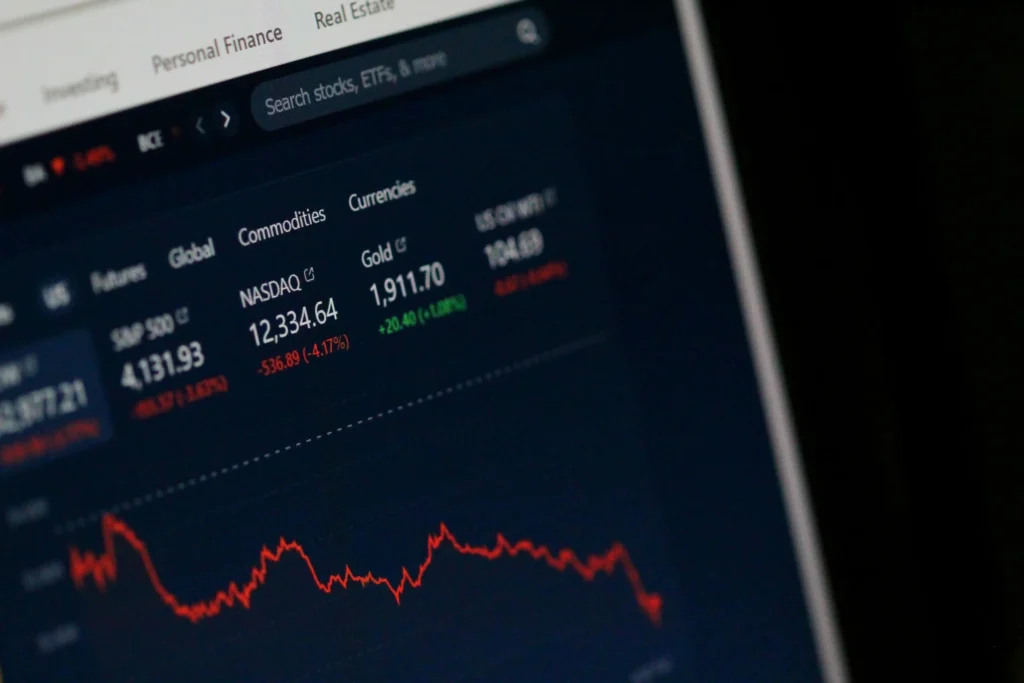In a dramatic turn of events on April 7, 2025, Indian stock markets mirrored global financial unrest, with key indices plunging sharply. The meltdown was largely triggered by the announcement of sweeping trade tariffs by the United States, creating widespread panic among investors worldwide.
A Day of Decline for Indian Markets
The Bombay Stock Exchange (BSE) Sensex saw a staggering drop of over 2,200 points, ending the session at 73,137.90 — a fall of nearly 3%. Meanwhile, the National Stock Exchange (NSE) Nifty 50 closed at 22,161.60, down by over 740 points or around 3.2%. This marks one of the most severe single-day declines in recent months, wiping out significant investor wealth and sparking concerns of a prolonged bearish phase.
The Global Trigger: US Tariffs Spark Panic
The sharp decline in Indian equities was not an isolated event. The global financial ecosystem reacted strongly after U.S. President Donald Trump imposed aggressive tariffs on imports from several countries, including key Asian economies. This move was framed as a corrective measure to address what the administration called “unfair trade practices.”
However, the decision immediately set off a chain reaction. Countries impacted by the tariffs, including China and members of the European Union, hinted at or initiated retaliatory duties, raising fears of a full-blown trade war. This has injected a massive dose of uncertainty into global markets, causing indices in Asia, Europe, and the Americas to nosedive.

Sectoral Breakdown: Metals and Financials Hit Hardest
Every major sector on the Indian exchanges ended the day in the red. Leading the losses were metal stocks, which bore the brunt of fears surrounding trade restrictions and raw material cost inflation. The Nifty Metal index dropped close to 7%, reflecting the deep concerns about global supply chain disruptions.
Financials were also under heavy pressure, as fears of reduced credit demand and weakening investor sentiment weighed down banks and non-banking financial companies. The Nifty Bank index and Nifty Financial Services index both declined sharply.
IT stocks, typically considered resilient, were not spared either. Given their heavy exposure to U.S. clients, IT giants like Infosys and TCS saw declines as investors feared a potential cutback in technology spending amid economic uncertainty.
Major Movers: Stock-Specific Developments
- Tata Motors experienced a 10% plunge after Jaguar Land Rover, its UK-based subsidiary, announced a temporary halt on exports to the U.S. The decision was a direct response to the new 25% import tariffs on automobiles entering the American market. This move dealt a double blow — revenue loss from exports and concerns over geopolitical stability impacting future earnings.
- Bharti Airtel, one of India’s largest telecom operators, saw a dip of over 3% as overall market sentiment deteriorated. Though its fundamentals remain strong, the broader selloff did not spare the stock.
- NTPC Ltd., one of the country’s major power producers, managed to limit losses and closed marginally down. Its relatively defensive business model offered some cushion against the panic-driven sell-off.
- Power Grid Corporation of India Ltd. also outperformed many peers, shedding just about 1.5%. Meanwhile, Tata Power saw a steeper fall, with its stock losing nearly 4%.
Volatility Skyrockets
India’s volatility index, the India VIX, jumped by more than 65%, indicating an atmosphere of high investor anxiety and unpredictability. Such spikes are rare and typically suggest that traders expect continued sharp movements in the near term.
The sharp increase in volatility also led to heavy selling by institutional investors, both domestic and foreign. Foreign portfolio investors (FPIs), in particular, were seen offloading equities in bulk, accelerating the market slide.
Global Market Fallout
What happened in India was part of a broader global market correction. In Asia, Japan’s Nikkei 225 fell by over 8%, and Hong Kong’s Hang Seng Index saw its worst single-day drop since the 1997 financial crisis, plunging more than 13%. European indices like the FTSE 100 and Germany’s DAX also sank, with the former hitting its lowest level in more than a year.
In the U.S., markets opened in the red, continuing the global trend. Early trades saw the Dow Jones and Nasdaq Composite down over 2%, while bond yields fell as investors fled to safer assets like U.S. Treasuries and gold.
Recession Concerns Surface
Investment banks and analysts have begun revising their forecasts. Goldman Sachs increased the probability of a U.S. recession in the coming year to 45%, citing the potential fallout from the trade conflict and its impact on global demand. This sentiment spilled over into emerging markets like India, which are closely tied to global capital flows and export markets.
Investor Advice: What Should You Do?
Amidst all the chaos, financial advisors are urging investors not to panic. While the short-term outlook remains uncertain, long-term investors are being reminded to stick to fundamentally strong stocks and avoid making impulsive decisions based on short-term market movements.
Some are even recommending this correction as a potential buying opportunity, especially for those with a long investment horizon and appetite for volatility. However, they caution against catching “falling knives” and advise close monitoring of how the global trade scenario evolves in the coming weeks.
What Lies Ahead?
Markets are now awaiting responses from key global leaders and central banks. If the tariff war continues to escalate, there could be further downside in equities across the globe. On the other hand, any signs of diplomatic negotiation or rollback of tariff plans could lead to a swift rebound.
In India, all eyes will be on macroeconomic data, quarterly earnings, and monetary policy cues from the Reserve Bank of India (RBI), which may step in to manage liquidity and sentiment if needed.
Conclusion
The dramatic fall in the Indian stock market on April 7, 2025, highlights how deeply interconnected today’s financial world is. A policy move in one part of the globe can send shockwaves across continents. As investors navigate these volatile waters, the key remains staying informed, rational, and focused on long-term financial goals.
1. Stock Analysis Pages (If You Cover Individual Stocks)
- Tata Motors Stock Performance
Anchor: “Tata Motors’ share price plummeted by 10% — [here’s a deeper look at its stock analysis].” - NTPC Stock Outlook
Anchor: “NTPC managed to hold relatively steady — [explore NTPC’s defensive strategy].” - Bharti Airtel Share Price Trends
Anchor: “Bharti Airtel fell 3%, [see its recent performance and telecom outlook].”
🔗 2. Market Tools and Resources
- Live India VIX Tracker
Anchor: “Volatility surged over 65% — [track the India VIX in real-time here].” - Nifty 50 Sectoral Heatmap
Anchor: “Every sector closed in the red — [see the complete heatmap breakdown].” - Upcoming RBI Policy Dates
Anchor: “Investors now await the RBI’s response — [check the central bank’s upcoming meeting schedule].”




Very Informative